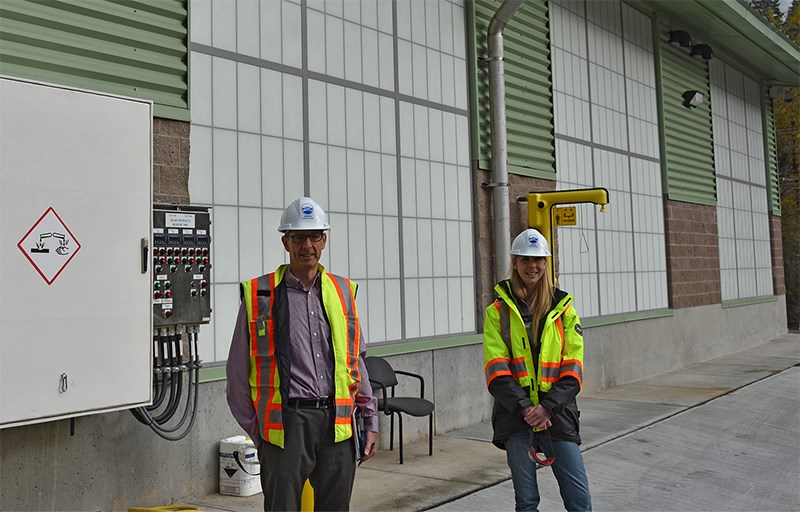A $4.3-million upgrade to the Coquitlam water plant ensures clean drinking water for the region and protects workers, say staff and managers responsible for the plant.
The recently completed project took two years and replaced the older chlorination system that required special handling with a new sodium hypochlorite feeder system that is much easier to use.
Sodium hypochlorite is basically household bleach; at higher concentrations, it will prevent bacteria regrowth in the water that serves a third of the region, including Coquitlam.
“North America-wide, they’re going for the sodium hypochlorite systems,” said Andrew de Boer, division manager for water treatment for Metro Vancouver, who said the project is the latest in a long line of upgrades going back to 2000.
“The older system was a lot more finicky to deal with,” said Tanya Richie, one of five water treatment operators.
“Safety wise, sodium hypochlorite is easier to deal with [than chlorine] with spills,” she added as she checked out the various monitoring systems that ensure the multi-stage disinfection system is operating properly.
The Coquitlam reservoir has supplied municipal drinking water since the late 1890s; BC Hydro owns and operates the Coquitlam dam but Metro Vancouver has an agreement with Hydro for drinking water supply.
Last week, The Tri-City News visited the plant to check out the new operations and maintenance centre, the high-tech ultraviolet light disinfection system, and the new tanks and feeder system for the sodium hypochlorite disinfection operation.
The feeder station is locked away in a cinderblock building and four large, new storage tanks holding 350,000 litres each of sodium hypochlorite are housed in an adjoining building.
The place is quiet and smells a little like a swimming pool.
No water can be seen during the tour but it is carefully monitored as it runs through the system, all 370 million litres a year of it, first entering the ozone plant, the primary disinfection system a kilometre away, then through the UV system, where ultraviolet lamps de-activate remaining micro-organisms, then it continues through a large pipe where sodium hypochlorite mixed with water is injected back into the flow via feeders that suck out some water, mix it with the chemical, and pump it back in.
Richie said her job is to stay on top of any changes in the equipment and monitor the various treatment processes, a job she enjoys because it's close to home and nature — with the burbling Coquitlam River nearby — while also giving her a feeling of accomplishment knowing so many homes and businesses are benefitting from clean water that is treated to the highest standards.
“We are known for our water,” Ritchie said with evident pride, “In a blind taste test, Metro Vancouver water comes out on top.”
Whether that’s because of the quality of the water in the reservoir first shaped by glaciation 10,000 to 14,000 years ago or because of the attention paid to disinfection throughout the system, it’s hard to say, but for de Boer and Ritchie, Coquitlam water should not be taken for granted.



